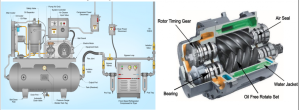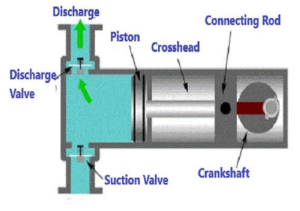What is Varnish?
Varnish and Sludge are generic names for the products of lubricant degradation. This also includes the by-products of additive depletion.
How is Varnish formed?
The main mechanisms of Varnish formation are:
Bulk Oil Oxidation
Oxidation causes degradation of the oil over time. At mild operating conditions and in a clean environment, oxidation will occur gradually once oxidation inhibitor additives are depleted. The rate of oxidation increases with temperature and will approximately double for every increase of 10°C. The presence of water, wear metals and aeration also act as catalysts for oxidative reactions.
Thermal and Compressive Heating
Thermal degradation occurs when the oil is exposed to high temperatures. This can take place when the oil is in contact with hot machine surfaces greater than 200°C. Another mechanism of thermal degradation is the adiabatic compression of entrained air bubbles. This produces localized temperatures in excess of 1000°C, which is more than sufficient to thermally degrade the oil.
Electrostatic Discharging
Frictional contact between a fluid and the filter medium in a hydraulic system can result in triboelectric charge generation. If this charge is not dissipated, it builds up and is eventually discharged to a lower potential site. This is similar to a small lightning bolt being created in the oil. Electrostatic discharges results in localized thermal and oxidative degradation.

Impact of Varnish on Hydraulic Systems
Oil degradation products are primarily polar substances and hence have limited solubility in non-polar substances such as turbine and hydraulic oils. These products are incompatible with oil and preferably adsorb to the polar metal surfaces of machines as varnish. Soluble varnish can also be transported by oil and condense onto surfaces such as the spool of servo valves, bearing surfaces, gears and other internal surfaces. This can lead to a range of problems such as:
- Change from hydrodynamic/elastohydrodynamic lubrication to boundary lubrication regimes due to reduced clearances between moving surface.
- Sticking or seizing of hydraulic valves.
- Higher operating temperatures: varnish acts as an insulator which can reduce the effect of heat exchangers and lower cooling rates.
- Clogging of filters, strainers, and other orifices.
- Increase wear rates: varnish is a soft containment and hard particles can collect on its surface, creating a sandpaper like appearance when viewed under a microscope.

Castrol Detergen System Cleaner
Castrol Detergen™ System Cleaner is an additive to clean oil systems. It is added to the oil fill before the oil change. The concentrate is free from solids, also soluble in semi-synthetic and in base oil. Sludge, deposits, lacquer formation and resin-like deposits are softened, dissolved in fine particles and kept in suspension. With the oil drain the particles are removed from the system.
Detergen System Cleaner has been designed for cleaning of oil circulation systems and oil reservoirs of engines, gears and hydraulic systems before oil change without the application of flushing oil or an intermediate oil change. Further it provides improvement of the cleaning properties of conventional flushing oils or low-viscosity oils used as system cleaners before the initial fill.





